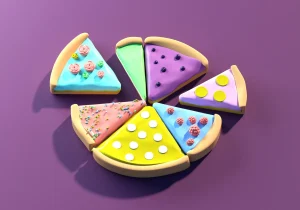OpenAI Unlocks GPT-4o

OpenAI has made a groundbreaking announcement with the release of GPT-4o. This move opens up new possibilities for developers and engineers, providing them with advanced tools to customize and fine-tune AI models.
Tech giants like Microsoft and Nvidia are also pushing the boundaries with their latest AI models. These new, leaner models are highly efficient, offering almost the same accuracy as much larger models while being faster and more resource-effective.
Microsoft and Nvidia’s Latest AI Models
Tech giants Microsoft and Nvidia are making waves in the AI sector. Their new models, Phi-3.5 and Mistral-NeMo-Minitron 8B, are designed to be leaner and faster without sacrificing accuracy. These models are highly competitive against larger, more resource-intensive models.
Microsoft’s Phi-3.5 Model
Microsoft’s Phi-3.5 model consists of three variants: the 42B parameter MoE-instruct, the 3.82B parameter mini-instruct, and a vision-instruct model. These models specialize in complex tasks, speed, and image and video processing.
Despite their smaller sizes, these models achieve state-of-the-art performance across multiple benchmarks. They are comparable to Gemini 1.5 Flash and even approach OpenAI’s GPT-4o in some tests.
Nvidia’s Mistral-NeMo-Minitron 8B Update
Nvidia’s Mistral-NeMo-Minitron 8B is an updated version of the 12B model it released last month. By pruning unnecessary model weights and retraining, Nvidia has created a model that is both compact and highly accurate.
This new, smaller model is ideal for specific uses like phone apps and customer service chatbots. Its efficiency makes it a game-changer, offering up to 40x less compute cost while maintaining high accuracy.
Efficiency and Customization
The focus on efficiency and customization in these new models is significant. Nvidia’s 8B model, for instance, is just as precise as its larger counterpart but is much more computationally efficient.
As AI development continues, the ability to customize and fine-tune models like GPT-4o could be a major advantage for developers and engineers. Customized models focused on specific tasks can set new industry standards.
OpenAI’s GPT-4o Fine-Tuning
OpenAI’s recent announcement allows developers to fine-tune GPT-4o, providing unprecedented flexibility. Independent developers now have the opportunity to access and customize one of the most powerful models available.
By offering 1M training tokens per day at no cost through September 23, OpenAI is encouraging experimentation and innovation. Customized versions of GPT-4o, specializing in areas like math or coding, may soon lead the industry.
Emerging AI Applications
The advancement in AI models opens up a multitude of new applications. From hyperrealistic video creation to data analysis, the possibilities are expanding.
Developments in AI enable tools that boost productivity and improve efficiency in various fields, making everyday tasks easier and more innovative. The future of AI looks promising, with continuous improvements and new tools emerging regularly.
These advancements signify a shift towards more accessible and efficient AI technologies, changing how industries operate and innovate.
Conclusion
The advancements by Microsoft, Nvidia, and OpenAI are pushing the boundaries of what’s possible in AI. Leaner, faster, and more customizable models are paving the way for new innovations.
Conclusion
As developers gain access to powerful and flexible tools like GPT-4o, we can expect to see rapid advancements and new records set in various AI applications. The future of AI is bright, with endless possibilities on the horizon.
The advancements by Microsoft, Nvidia, and OpenAI are pushing the boundaries of what’s possible in AI. Leaner, faster, and more customizable models are paving the way for new innovations.
As developers gain access to powerful and flexible tools like GPT-4o, we can expect to see rapid advancements and new records set in various AI applications. The future of AI is bright, with endless possibilities on the horizon.





